Imagine a row of beads laid out on a table. Some are spread farther apart than others. They are all different shapes and colors. They may seem to have nothing in common when viewed individually, but when you put them on a string, they become part of something bigger—suddenly the beads are connected.
Just like those beads, communities, cities, counties, towns, and parks along the 652 miles of the Tennessee River are now becoming connected through the Tennessee RiverLine Partnership, an initiative that began with one student’s idea in 2016.
As part of a landscape architecture studio class, students drove the entire length of the river in five days, stopping along the way to talk with community members, farmers, and government officials about how they interact with the river and manage it as a resource.
The goal was to come up with ideas about how to advance the region’s legacy of leadership and innovation in the face of 21st-century challenges and to more fully utilize the river while at the same time stewarding it as our region’s most valuable natural and cultural resource. The class included a mapping exercise that sparked an idea for Journey Roth.
“I was assigned to look at different points along the river—historic sites and tourist sites. And another map showed where trails came close to the river,” says Roth, who graduated in 2017 with a bachelor’s degree in architecture. “And I thought there’s got to be a way to connect all these places by a trail.”
 Brad Collett (’01), associate professor of plant sciences and director of the Tennessee RiverLine, led the studio trip along the river and could immediately see the value of what Roth proposed— a continuous trail where people could paddle, hike, and bike the Tennessee River from Knoxville to Paducah, Kentucky.
Brad Collett (’01), associate professor of plant sciences and director of the Tennessee RiverLine, led the studio trip along the river and could immediately see the value of what Roth proposed— a continuous trail where people could paddle, hike, and bike the Tennessee River from Knoxville to Paducah, Kentucky.
“It struck a really strong chord with many of the stakeholders around the region,” Collett said. “TVA (Tennessee Valley Authority), state parks, tourism associations—they all thought it was a powerful idea and aligned with what they were already doing.”
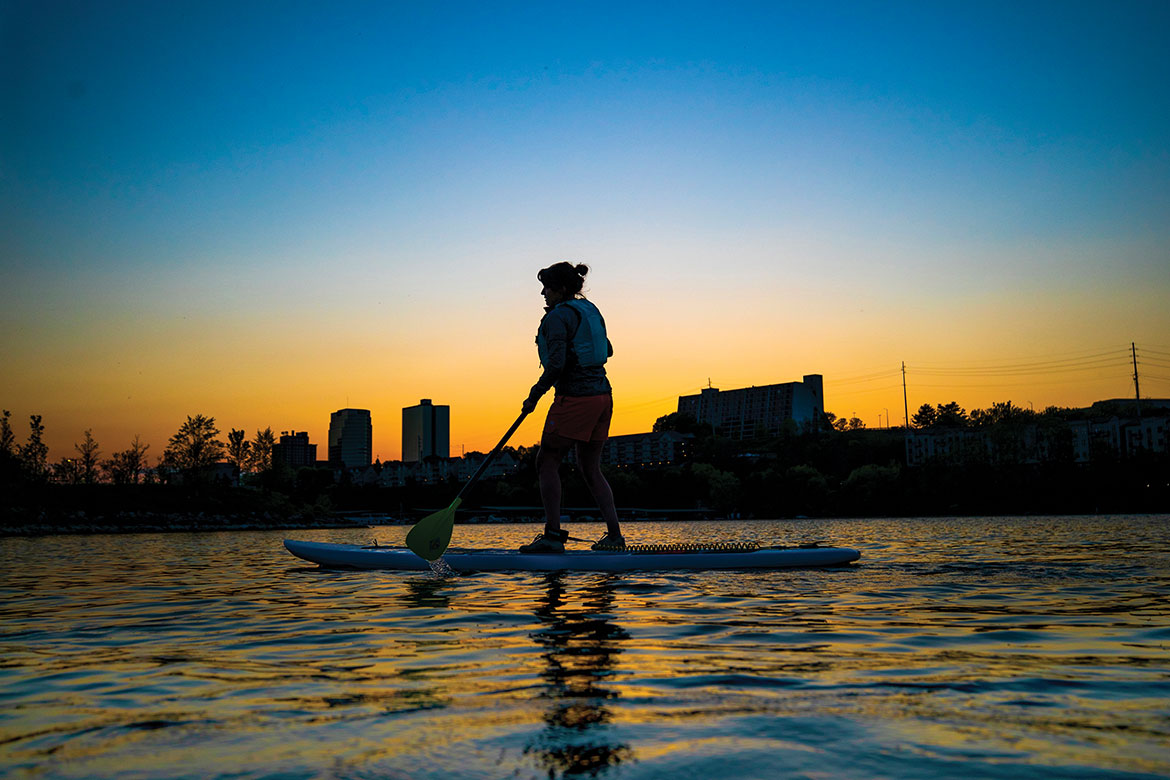
Though the heart of the original idea is the same, Collett says it’s been expanded on in some important and beautiful ways. “In its earliest connected spaces; the idea has since grown into a comprehensive initiative tethered to guiding principles, transformational goals, and significant outreach to river communities.”
The goal is for the Tennessee RiverLine to become the country’s next great regional trail system and a catalyst for economic development, public health, equitable river access, and environmental stewardship in communities along the river—reconnecting people in the Tennessee River Valley through partnerships and reclaiming the river’s edge across urban, rural, and natural landscapes to provide for higher levels of public access to the river.
“It’s the idea that we can do something together as a region that one can’t do alone,” Collett says. From the beginning, the initiative was supported by the College of Architecture and Design, the Herbert College of Agriculture, and the School of Landscape Architecture (which resides jointly within the two colleges). But partners quickly jumped on board, including Tennessee State Parks and TVA, which provides electricity for parts of seven southeastern states as well as flood control, navigation, recreation, water quality, and land management for the Tennessee River system.
UT’s strong associations with the agency began early in TVA’s history, when UT President Harcourt Morgan served as one of TVA’s three founding directors in 1933. And that tradition continues with the Tennessee RiverLine. TVA recently became a principal partner in the project, along with UT, taking on a leadership role and committing a $1.2 million investment to help accelerate the initiative.
“TVA strives to invest in what we like to call power partnerships—those alliances that reflect our 1933 mandate from Congress to ‘make life better for the people of the Tennessee Valley,’” says TVA Vice President of River and Resources Stewardship David Bowling (’89, ’91).
“If you look at the UT seal, it has a plow and riverboat. And the TVA seal has a tugboat and a barn. They both feature the river prominently,” says Bowling. “To see us align in promoting the river is like having two good friends work on something together.”
But it’s more than just the partnership between UT and TVA that is fueling the success of the project. “It has been amazing seeing these communities come together under a similar focus and mission,” says Clay Guerry, recreation strategy specialist for TVA. “The Tennessee River connects us by water; the Tennessee RiverLine connects us by purpose.”
The Tennessee RiverLine recently welcomed 15 communities, representing 35 cities and counties and 836,000 citizens, as members of the inaugural Tennessee RiverTowns Program cohort. The program offers support to member communities while cultivating collaboration and innovation to achieve the overall initiative’s goals.
Roane County, Tennessee, has been a part of the initiative from the beginning. It was selected to be a pilot community in 2018, before the RiverTowns program was even established.
“We’re a river community just by definition,” says Roane County Executive Ron Woody, who was raised on the Tennessee River and points out that the Clinch and Emory Rivers also run through the county.
He and Roane County’s director of parks and recreation, Mike Beard, helped identify people for a Tennessee RiverLine leadership team in the county and are working with others outside of the county.
“This is an avenue to get our little county pulling together on one rope,” Beard says. “And then other counties join together, like Loudon County, to hold joint and regional events.”
Woody says that before the COVID-19 pandemic they held a few events with 30 to 40 people coming out to paddle on the river. Some of the paddlers were experienced, and some had never been in a kayak but said they had always wanted to try it. They just never knew where they could go to take part or where to get the equipment without buying their own.
In May, with resources from UT and TVA, the partnership granted Tennessee RiverTowns communities fleets of kayaks to give equitable access to recreation equipment and help break down barriers to the experience for individuals and families. The fleets will also be shared between communities to facilitate larger events.
“The kayak fleet is a great addition,” says Julie Harris, the executive director of the River Discovery Center in Paducah, Kentucky, and a member of her community’s Tennessee RiverTowns leadership team. “That will help engage members of our community with the river.”
Harris hosted that first group of students on their tour of the river in 2016 and has been involved ever since. Paducah, which sits at the confluence of the Tennessee and Ohio Rivers, became a pilot community and then part of the Tennessee RiverTowns program.
She says when Collett and his students came to Paducah again in 2019, they held workshops with businesses, local government, and the community to help them understand the vision of the Tennessee RiverLine, and it got people on board.
“From that there’s been a lot of interest and enthusiasm moving forward,” Harris says. And when the initiative brought a fleet of kayaks that September, the event filled up quickly.
JC Johnsonius, a Tennessee RiverTowns leader and state park manager in Benton County in West Tennessee, has been blown away by the impact the initiative has made already with cleanup events, identification of the most-needed projects, and help securing a $50,000 Tennessee Department of Health Built Environments grant.
“This is so important for rural communities,” Johnsonius says, “because they lack the connections and infrastructure to do this on their own. Oftentimes they lack the financial ability to develop and utilize infrastructure properly.”

He says communities often need help seeking out and applying for grants and the networking that’s involved to accomplish it all. “Now we have connections with national parks, UT, and TVA. We didn’t have that before.”
For Collett, this work is possible only at UT, because of its commitment to its land-grant mission and to outreach and community engagement.
“As a faculty and alumnus, I’m just proud UT has assumed a leadership role in this multigenerational initiative,” says Collett. “UT, the School of Landscape Architecture, and the discipline of landscape architecture, most broadly, are uniquely capable of doing this scale of work, and I’m grateful to be at a university where this type of effort is encouraged and supported.”
Danny Rose (’16, ’20), who worked on the initiative as a student and an intern, agrees with Collett. “The university is an anchor point, driving home that land-grant mission by dealing with large public problems and disseminating that into the community. You just don’t see large-scale projects that have the potential to tie together communities like this.”
For 652 miles the Tennessee River meanders, courses, and flows through four states, bringing good things to the lives it touches without a worry about state lines or borders. And the same is true of Tennessee Volunteers—working together for good no matter where they are in the world.
—
Photos in gallery courtesy of Tennessee RiverLine


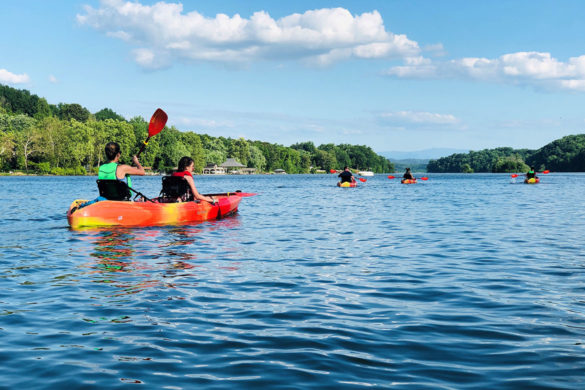
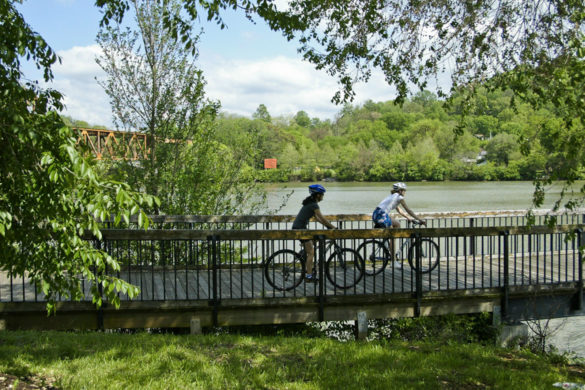
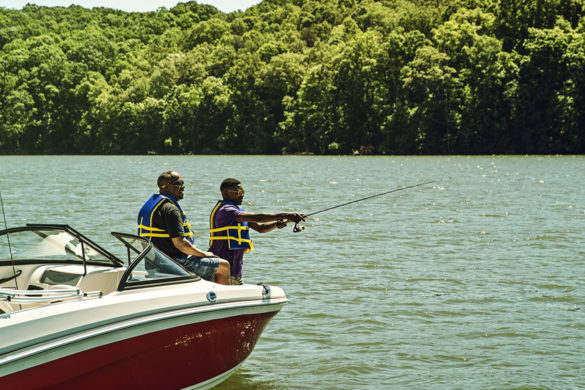
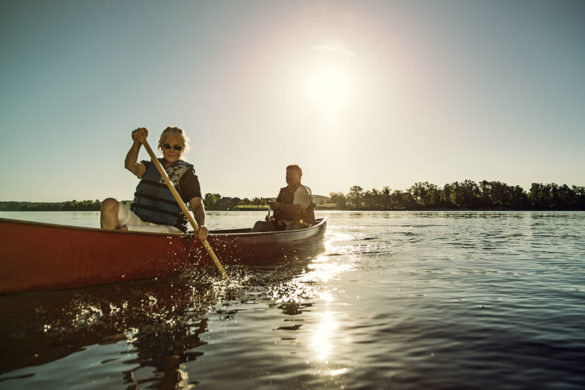
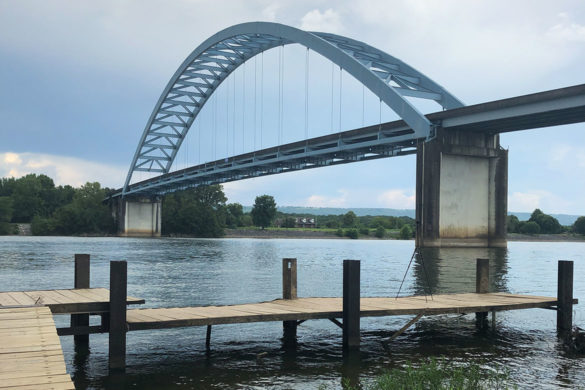
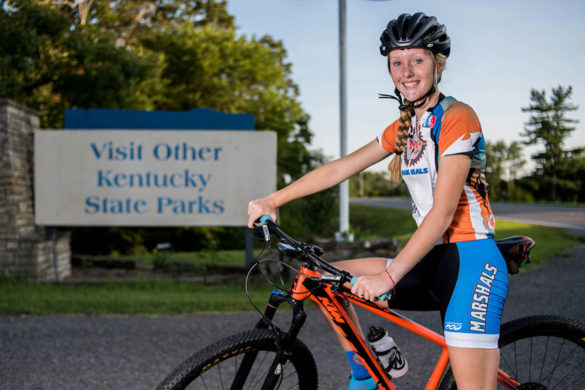
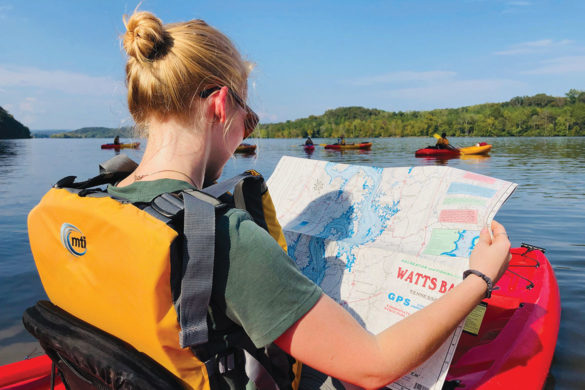

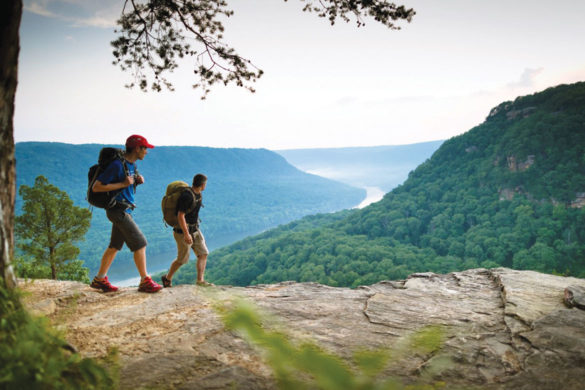
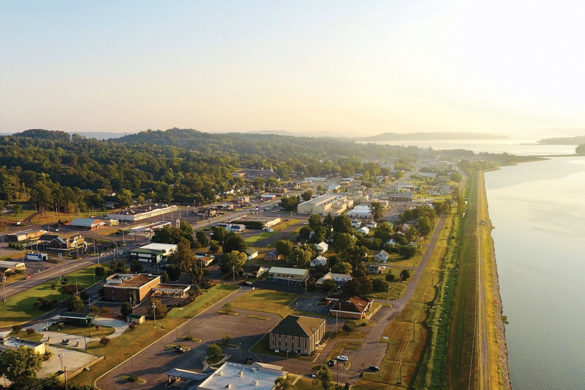
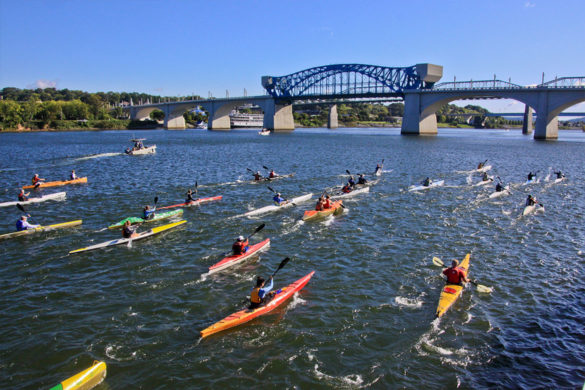
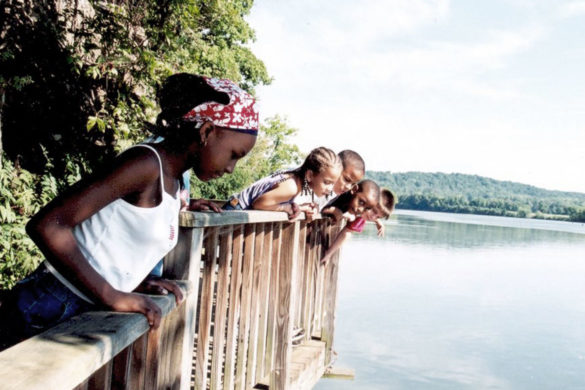
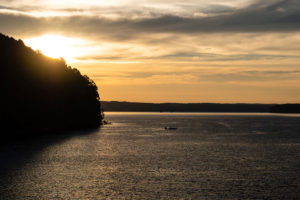
1 comment
Absolutely beautiful region. Definitely a lot more infrastructure can be created alongside the river line. It might also help to draw more tourist to the area. Obviously there are some difficulties when it comes to states authorities, but i think it’s a great project overall.